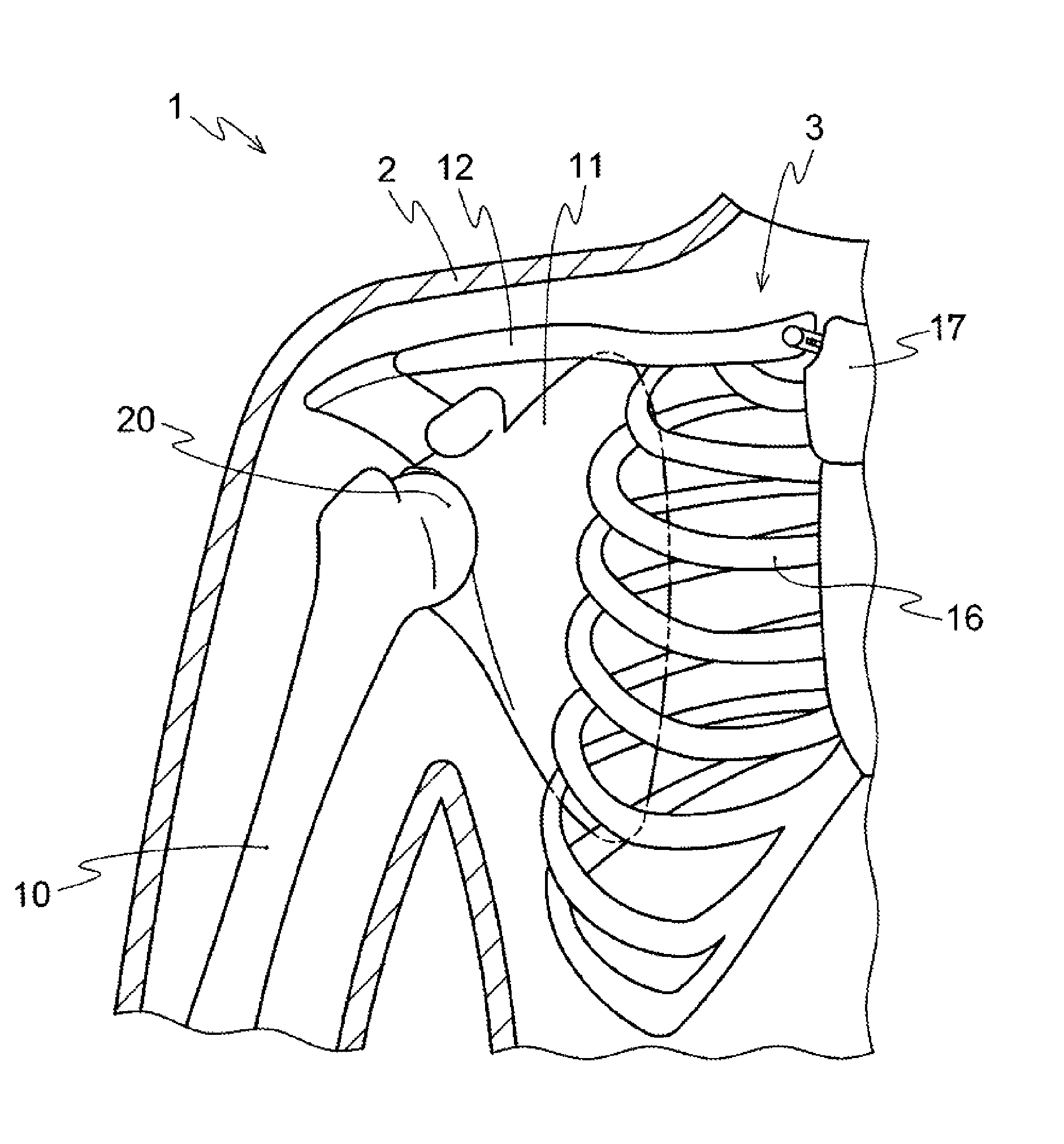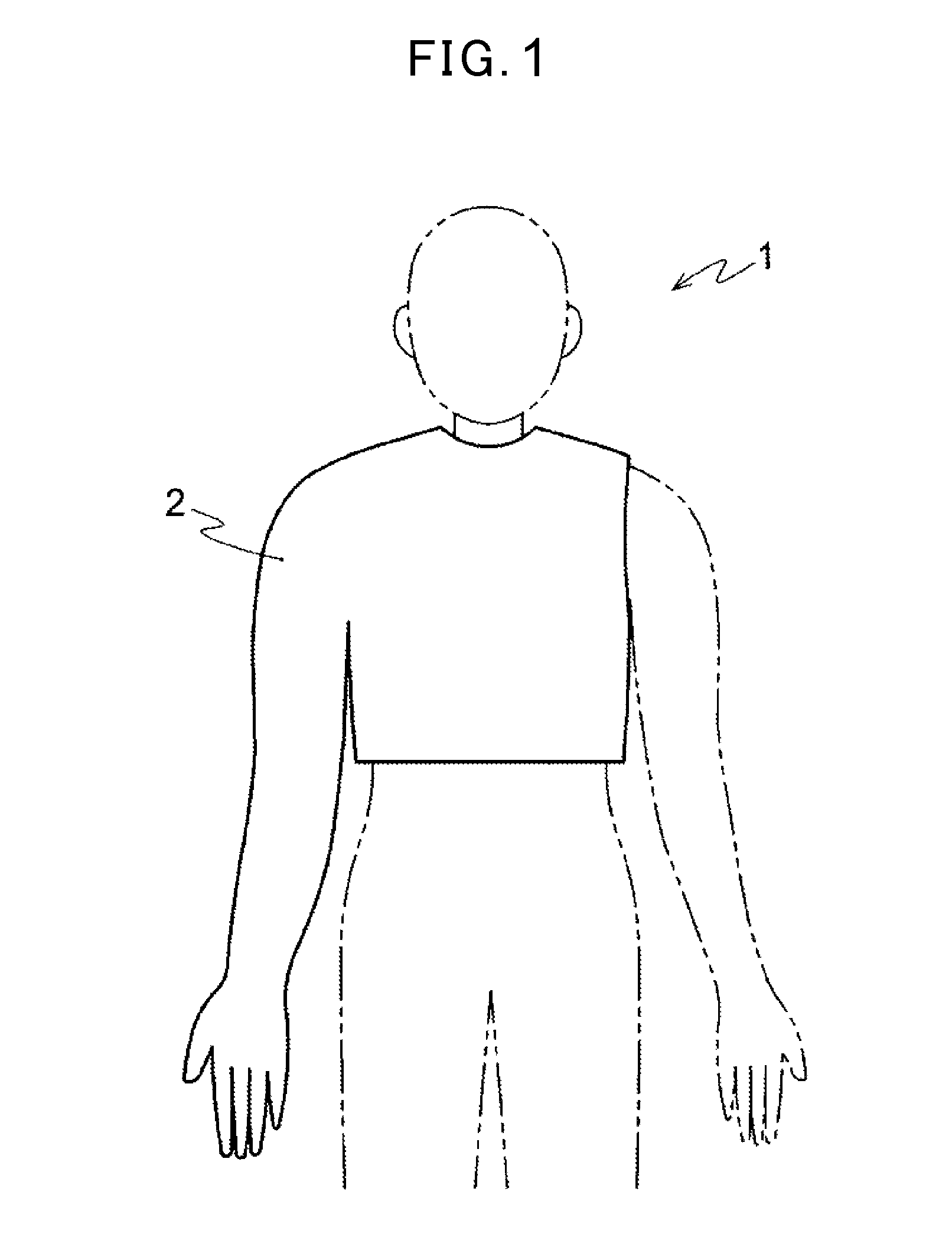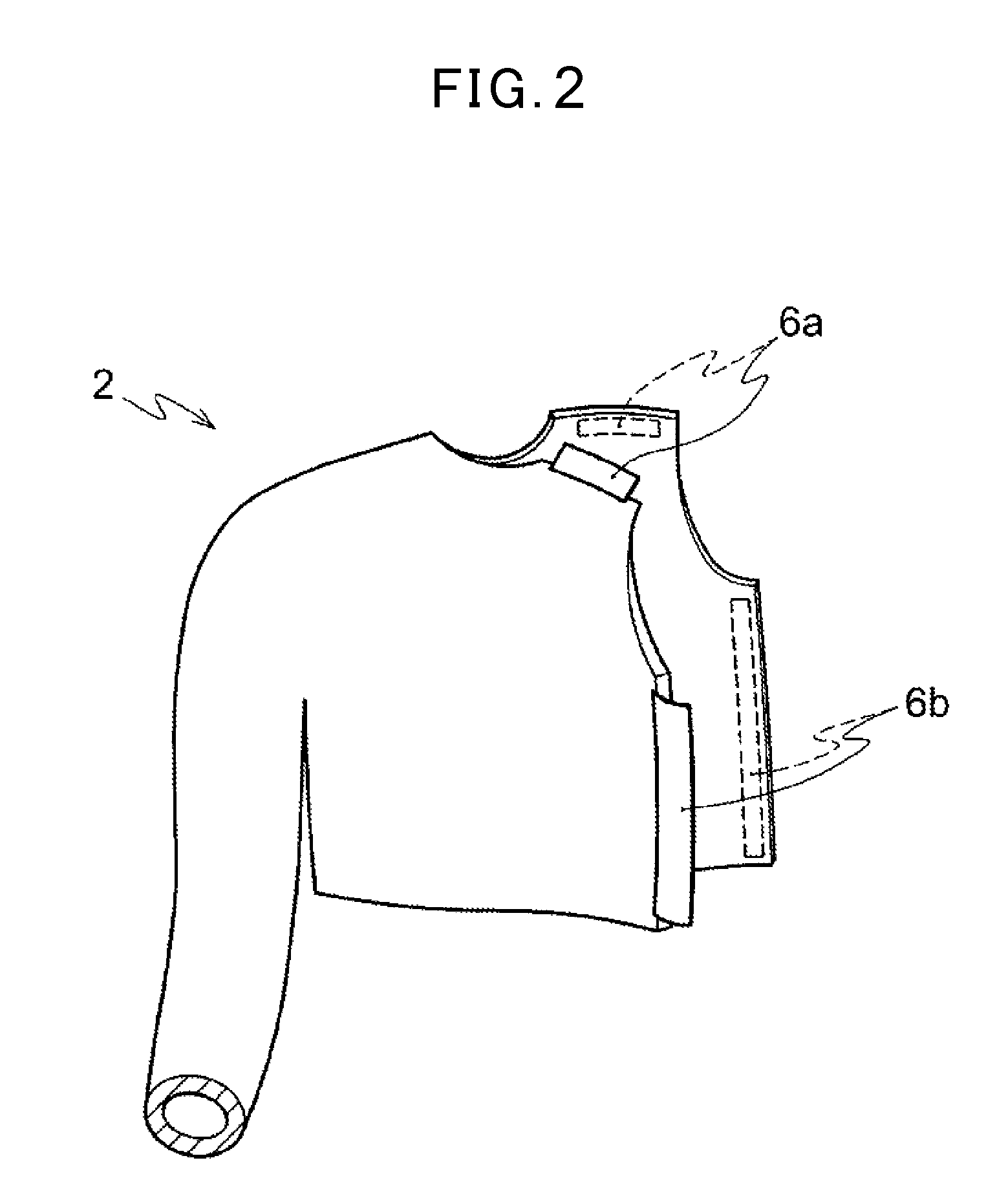Anatomical model for training aid for learning reduction techniques and a method for learning the reduction techniques using the anatomical model for training aid
a training aid and anatomical model technology, applied in the field of anatomy models for training aids for learning reduction techniques, can solve the problems of increasing the number of judo therapists who have not been able to learn sufficient reduction techniques, the uneasiness and pain of patients caused by the reduction of poorly skilled judo therapists or trainees, and the treatment method is no less excellent than judo therapy. the effect of improving the reduction techniques of judo therapists
- Summary
- Abstract
- Description
- Claims
- Application Information
AI Technical Summary
Benefits of technology
Problems solved by technology
Method used
Image
Examples
first embodiment
[0053]Shoulder joint dislocation is further classified into anterior dislocation (subcoracoid dislocation or subclavian dislocation), posterior dislocation (subacromial dislocation or subspinous dislocation), inferior dislocation (axillary dislocation or subglenoid dislocation) and superior dislocation (epicoracoid dislocation), but subcoracoid dislocation under the category of anterior dislocation is mostly the case, and therefore, subcoracoid dislocation is to be reduced in the present invention. In this regard, however, shoulder joint dislocation in the present invention is not limited to subcoracoid dislocation.
[0054]For easy understanding of the first embodiment, occurrence mechanism, symptoms and typical reduction method of subcoracoid shoulder joint dislocation will be described.
[0055](Occurrence Mechanism)
[0056]Subcoracoid shoulder joint dislocation occurs due to (a) a direct external force from behind, (b) an indirect external force exerting excessive extension force on a s...
tenth embodiment
[0147]FIG. 32 is a schematic side view of a connected skull member and an articular disc member of an anatomical model for training aid for learning a reduction technique for anterior temporomandibular joint dislocation according to the present invention in a normal connection status and FIG. 33 is a schematic side view of the connected skull member and the articular disc member of FIG. 32 in a status of anterior temporomandibular joint dislocation.
[0148]The anatomical model for training aid for learning the reduction technique for anterior temporomandibular joint dislocation according to the tenth embodiment and a method for learning the reduction technique using the anatomical model for training aid are basically the same as the ones according to the ninth embodiment described earlier, and thus they will be described with a focus on their differences.
[0149]As shown in FIG. 32 and FIG. 33, the anatomical model for training aid for learning the reduction technique for anterior tempo...
PUM
 Login to View More
Login to View More Abstract
Description
Claims
Application Information
 Login to View More
Login to View More - R&D
- Intellectual Property
- Life Sciences
- Materials
- Tech Scout
- Unparalleled Data Quality
- Higher Quality Content
- 60% Fewer Hallucinations
Browse by: Latest US Patents, China's latest patents, Technical Efficacy Thesaurus, Application Domain, Technology Topic, Popular Technical Reports.
© 2025 PatSnap. All rights reserved.Legal|Privacy policy|Modern Slavery Act Transparency Statement|Sitemap|About US| Contact US: help@patsnap.com



